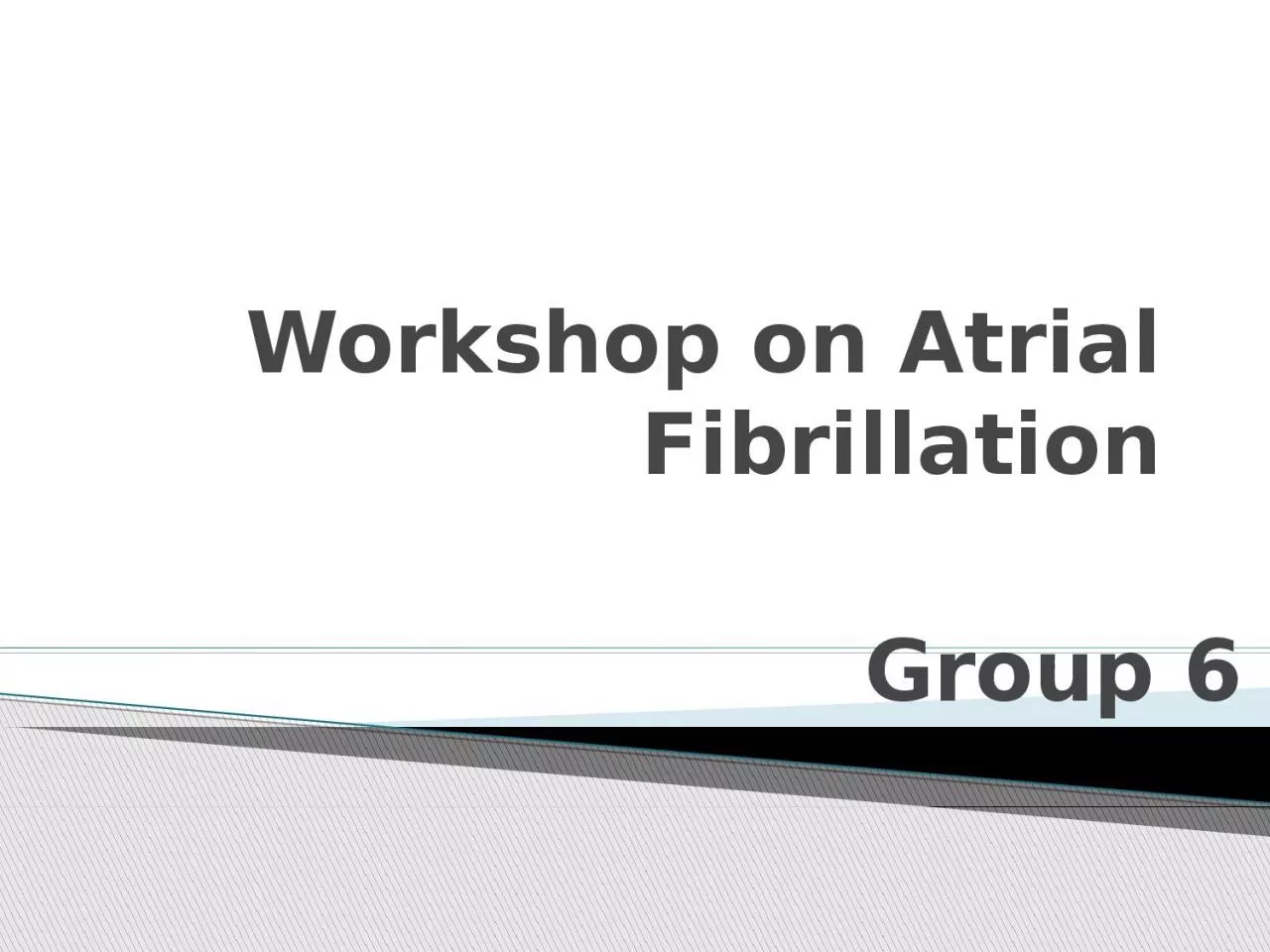

Group 6 The most common type of arrhythmia irregular heartbeat In AF atria contract very fast and irregularly Atria get pooled by blood Blood not being able to go into ventricles completely ID: 914959
Download Presentation The PPT/PDF document "Workshop on Atrial Fibrillation" is the property of its rightful owner. Permission is granted to download and print the materials on this web site for personal, non-commercial use only, and to display it on your personal computer provided you do not modify the materials and that you retain all copyright notices contained in the materials. By downloading content from our website, you accept the terms of this agreement.
Slide1
Workshop on Atrial Fibrillation
Group 6
Slide2The most common type of arrhythmia (irregular heartbeat)
In AF, atria contract very fast and irregularly.
Atria get pooled by blood.Blood not being able to go into ventricles completely.Consequently, atria and ventricles do not work together.The heart’s electrical signals do not begin in the SA node.Signals begin in another part of the atria or in pulmonary veins and they don’t travel normally. The amount of blood pumped by ventricles to the body depends on atrial beats.
Atrial Fibrillation
Slide3Interesting patterns seen in many experiments. Example: Belousov- ZhabotinskyUsually rotate without changing their shapes
The tip traces out a perfect circle
After getting destabilized, they either drift or meander. Spiral Waves
Slide4Inward meandering
Slide5Outward meandering
Slide6Drifting Spiral Waves
Slide7Parameters
G
Na – Conductance for fast Na+ channelkNaCa – Current for Na+/Ca2+ exchangerNa+/Ca2+ exchanger- An antiport, where three Na
+
are
brought in for one Ca
2
+,
when the membrane potential is negative and when the cell is depolarized, Na
+
leaves and Ca
2+
enters.
G
Na
vs
k
NaCa
Slide8Spiral Wave of Day 1
G
Na
K
NaCa
Maximal
I
Na
conductance
Maximal
I
NaCa
Slide9Path of Day 1
G
NaMaximal
I
Na
conductance
K
NaCa
Maximal
I
NaCa
Slide10Spiral wave Day 2
G
NaMaximal
I
Na
conductance
K
NaCa
Maximal
I
NaCa
Slide11Path of Day 2
G
NaMaximal
I
Na
conductance
K
NaCa
Maximal
I
NaCa
Slide12Day 1 VS. Day 2
Wave Comparison
Slide13Day 1 VS Day 2
Trajectory Comparison
Slide14Conclusions:
Spiral waves are influenced by the concentration of Ions.
Different shape of the spirals depending on which concentration is changed first.Low concentration of Sodium Calcium exchanger and high concentration of Sodium produces trajectories that are more chaotic.
High Sodium-Calcium concentration and low Sodium concentration produces spiral trajectories that are tight.
Slide15Nancy Griffeth
Flavio
FentonRobert GilmourBard ErmentroutAron WolinetzCharles BeardRachel SprattAll participants Acknowledgement